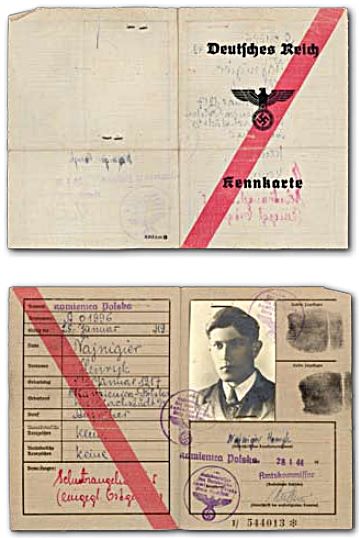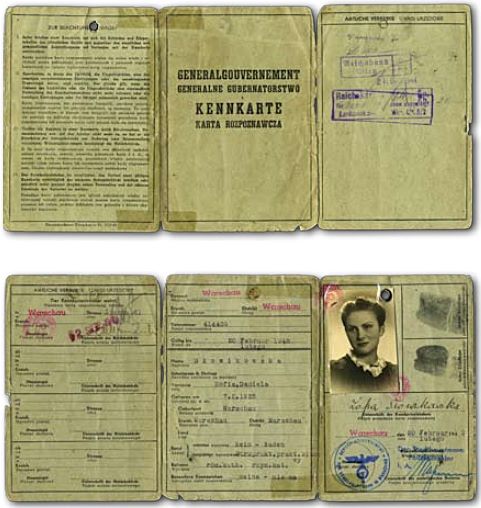“identity card”, during Nazi occupation there was another type of identification document. There were two separate cards, one was attributed according to one’s nationality and other issued by the administrative region where one was living. The document had two pages and included personal data, photograph, fingerprint and the signature of the holder. In the case of German nationality, or of being part of the Volksliste, the cover of the book had a vertical stripe and the classification of Reichsdeutscher, Volksdeutscher, and Deutsche Staatsangehörigkeit “German nationality” (German citizenship).

In the General Government there was another type of this document. It was bilingual, it had three pages, and information about the local registration and the religion. This document had a validity date. To each registration was attributed an identity number.

This kind of document was instituted in the General Government by the decree of the 26 of October of 1939 and it was mandatory until 1943. This law covered everyone over 15 years old. To obtain this document one should apply to the Census Office and attach the birth certificate, eventually the marriage certificate and the local registration document. In the case of (non-Jewish) Polish people or from other nationality, they should also attach a certificate of Aryan background. It was not required to take the old identification card to proceed with this registration because in the time of Second Republic of Poland (II Rzeczypospolita), it was not mandatory to have an identification card. In the beginning of the occupation it was required that these documents were issued in Polish and in German. One had to provide his fingerprint and sign the document when he received it, in the presence of Police authorities who confirmed the veracity of the data with a signature and a stamp.
The documents varied according to the particularities of the person. They had different colors and different classifications according to nationality. Green cover was for Poles, yellow for Jews and Gypsies and blue for Ukrainians, Russians, Belorussians and other minorities. Inside the document there was the mark that distinguished between Jewish “J”, Gypsies “Z”, Ukrainians “U”, Belorussians “W” and Russians “R”, etc. A copy of this document was made whilst registering and was filed in the Police Office for consultation in case of suspicion regarding the identity of the subject or the veracity of the data provided. This card was filled out by hand or typing machine. The type of paper was intended to prevent the forgery of the document, once the texture was spoiled if someone tried to erase the information. However, despite its characteristics, it was the most forged document in the General Government (GG).